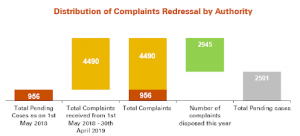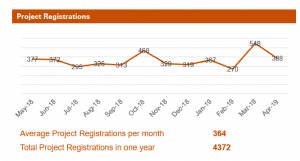This article is written by Vibha Aggarwal, pursuing a Certificate Course in Real Estate Laws from LawSikho.com. Here she discusses ” How RERA is Beneficial to its Stakeholders: Home Buyers, Builders, and Government”.

Real Estate (Regulation and Development) Act, 2016 (RERA) the landmark legislation, came into existence on 1st May 2016 in order to boost investments and to protect and safeguard the interest of homebuyers against the unfair trade malpractices of the builders.
The key objective of the Act is to bring greater transparency, accountability, financial discipline, speedy redressal of disputes and protect home buyers by creating a positive ecosystem.
It follows the principle that the buyer is the king and the builders will have to ensure compliance to avoid punishment.
Under RERA, the Home Buyer is a King, How?
The introduction of RERA has resulted in a better-regulated system is beneficial to all the stakeholders. The rules & regulations explicitly safeguard the home buyers from prevailing malpractices in the real estate sector. The Primary objective of RERA is to protect home buyers & create an eco-system wherein they get maximum benefits from this Act
Benefits of RERA to Home Buyers
-
Right to Information/disclosures
One of the main advantages of the RERA to the buyer is that before investing in property the buyer now has the full right to information about the builder and their projects. Post RERA, the builder is responsible for sharing all the relevant information with the buyers. This includes: plans related to layout, execution plan, stage-wise completion status, government approvals, completion status, etc. Not only the project information is available but also once the builder gets registered with RERA, the buyer can access all the information about the builder -such as previous track record of the builder, financial status, litigation if any, prospectus with all the details of the property, etc. thereby ensuring transparency.
Buyers can access the details by visiting and checking the respective state RERA’s website and can be now more confident before investing their money in any project.
Also, under the Act, citizens have the right to ask for information related to any builder/project. This provision enables every citizen to raise issues pertaining to the real estate sector.
MahaRERA received a number of applications from the citizens seeking information under the Act.
|
1st May 2018 to 30th April 2019 |
|
|
Number of applications received by PIO/APIO seeking information under RTI |
456 |
|
Number of applications for which information has been provided by PIO |
451 |
|
Number of an application pending with PIO |
5 |
|
Number of appeals filed before the First Appellate Authority against the order of PIO |
52 |
|
Number of appeals which have been disposed of by First Appellate Authority |
52 |
|
Number of appeals pending with First Appellate Authority |
0 |
|
Number of applications/appeals not disposed of in the stipulated time frame |
0 |
Source: MahaRERA Annual Report 2018-2019
-
Standardized Carpet Area
Before RERA, there was no standard formula for the computation of the carpet area, in the absence of any defined guidelines the builders use to inflate the carpet area which further increases and shoots up the cost of the property.
Post RERA, there is a standard formula for calculation of the carpet area; therefore the builders would not be able to manipulate the same.
-
Rate of interest on default on payment
Prior to RERA, in case of the default in payment by the buyer to the builder or in case builder delays the possession, the interest rate paid by the builder to the buyer was less whereas the rate of interest paid by the buyer to the builder for default in payment was higher.
After RERA implementation, the interest rate shall be the same for any of the defaulting parties.
-
Advance Payment
Prior to RERA, homebuyers had to pay advance payment as demanded by the builder; there was no cap on it. Now the builder can’t demand more than 10% of the cost of the property as advance or application fees before entering into the agreement.
-
Reducing the risk of builders bankruptcy/insolvency
Many builders tend to have multiple projects which are being constructed and developed at the same time simultaneously. Earlier, the builders can use the funds raised from one project for any other project, leading to a lack of funds. There have been cases where the builders raised the funds from the home buyers to construct their property but used the same funds in other projects/other purposes. They later become bankrupt and were not able to complete the construction of the property for which the funds were received from the home buyer.
Since RERA implementation, now the builder has to open a project-specific bank account and deposit 70% of the amount collected from the potential buyers of that project in this account. The builder can withdraw the funds only for the specified project for which the funds were raised and shall be in proportion to the completion of the project after being certified by a civil engineer, architect and a chartered accountant in practice.
This will also ensure the timely completion and delivery of the projects, as before lack of funds was a common excuse by the builders for the delay of the projects.
-
Right of the buyer in case of false commitments/promises
In case of any disparity/difference between the commitments/promises made by the builder and the actual property, the buyer, in that case, has the option to withdraw from the project and will be entitled to a full refund of the amount paid in advance or otherwise along with the interest and claim compensation.
-
Right of the buyer in case of the defect after possession
The buyer would be entitled to rectification of defects free of cost in case of any structural defects, any defect in workmanship or in quality, service or provision, within a period of 5 years from the date of the possession. Any such defects would be rectified within a period of 30 days once the defects are detected.
If the builder fails to carry out the repairs within the stipulated time, the buyer can claim compensation for the same.
-
Right of the buyer in case of delay of possession
If the builder fails to deliver the possession of the property on the due date, then the buyer has the following options available:
- To withdraw from the project, wherein the buyer shall be entitled to a full refund along with the interest from the due date of completion till the amount is refunded.
- To continue with the project until its completion, wherein the buyer will be entitled to compensation along with interest payable from the due date of completion of the project till the project is actually completed.
-
Right of the buyer in case of a defect in title
If any time after the possession of the property, the buyer finds that there is a defect in the title of the property then the buyer can claim compensation from the builder.
It is even “not barred by limitation” which means there is no time frame within which such claim has to be made.
-
Setting up of an Authority for grievance redressal
A common grievance that is faced by most buyers is the delay in possession or no completion of the project. Before RERA, the buyers did not have any redressal mechanism apart from the regular time consuming legal framework.
Post RERA implementation, the buyer can now approach the respective State Authority set up under RERA. If the buyer is not satisfied with the order passed by the State Authority, a complaint can also be filed or an appeal can be made with the Appellate Tribunal which will redress the case within 60 days and in case of failure to do so, it shall record the reasons of such failure or be extended with the reasons of delay.
The Tables below provide details on complaints received by the MahaRERA Authority

|
Number of Cases pending with the authority at the start of the year |
Number of cases received during the year by the Authority |
Number of Cases disposed of by the Authority |
|
956 |
4490 |
2945 |
Source: MahaRERA Annual Report 2018-2019
RERA enhances builder`s credibility, How?
The Act also has adequate provisions to safeguard the builders from the buyers who purposely delay the due payments and/or not taking possession of the property after receiving a completion certificate. Also, RERA enhances the credibility of registered builders which helps them in securing investments/finances.
Benefits of RERA to builders
Boost Buyers/Investors Confidence and Investments
Due to RERA, the buyers/investors can check the details of the builder and their projects on the respective state RERA website which will revive the faith of the buyers/investors on the builders which in turn will boost their confidence in real estate sector and increase the investments.
The establishment of a regulator will also result in the increase of foreign investments which will give a boost to the overall sector.
Example:
The MAHA RERA Authority commenced an online registration process from 1st May 2017. In total 20,560 project registrations have been granted as on 30th April 2019. Of these 4372 Project Registrations have been granted between 1st May 2018 and 30th April 2019. The distribution of the same month-wise is as follows:

Source: MahaRERA Annual Report 2018-2019
The distribution of total 20,560 projects by status of completion is as follows. Of total 20,560 projects were registered as on 30th April, 2019 and 7,579 projects were new projects.

Source: MahaRERA Annual Report 2018-2019
In Maharashtra, the Real Estate Projects are distributed as follows district wise:

Source: MahaRERA Annual Report 2018-2019
Transparency
With the RERA being into existence, the builders will take reasonable care in uploading the details of the projects on the respective state regulatory websites, which will increase the transparency in the marketing and execution of the projects. Because of the increased level of transparency, the investment rate will be improved in the real estate sector.
Certificate of Authenticity
Post RERA, no one can question the integrity of the builders as RERA will provide certificates only to genuine and authentic builders.
Visibility to genuine builders
Genuine builders will get visibility of work. The number of projects launched will be low post RERA implementation; however honest builders who are known for the timely delivery of the projects will gain the benefits from this situation and the unreliable builders who mislead the innocent buyers and investors will be out of the market. Genuine projects under reputed and honest builders will increase in the market creating lesser but healthy competition. This will help credible builders and dissolve unorganized builders who thrive on innocent buyers/investors.
Increased price to the builders
One of the impacts of the RERA is that with the increase of cost of compliance for the builder post RERA, the builder will get a higher price from the buyers as the builder’s compliance cost shifts to the buyer.
Lower Equity Cost
Due to a lack of trust amongst the lenders towards builders, the builders end up taking a huge amount of loans at a very high rate of interest. Once the real estate schedule is organized post RERA implementations, Private Equity Players, Banking, and Non-banking Financial Companies will not hesitate in funding projects proposed by the builders which are genuine by nature. Builders having all the requisite permits find it easy to get their projects funded through these lenders. This will, in turn, lower the equity cost and lessen debts for the builders.
Buyers accountable for a breach of agreement and delay in payments
The builder has the right to approach the regulator in case there is any dispute with the buyer. In case of any breach of the builder-buyer agreement by the buyer, the builder can hold the buyer accountable for the same.
In case of delay in payments by the buyer to the builder, the builder can claim interest and also file a complaint against the buyer for the non-payment with RERA. If the buyer creates a third-party interest without informing the builder, the builder can also take legal action against the buyer.
Reduction in Fly by Night Realtors
As per the RERA rules, builders have to invest 70% of the amount collected from the consumers in the planned project thus there will be very little scope of pre-investing in upcoming projects. This will reduce the number of Fly by Night realtors and the value of reputed builders who do their business unambiguously will increase.
Timely possession of the property
Under RERA, the buyers are liable to take possession of their property within two months of receiving the Occupancy Certificate and cannot hold the builder liable for any further delays on their part.
Robust grievance redressal system
Post RERA implementation, the disputes between the buyer and the builders can be resolved quickly within a specific time and the builder can also appeal against a RERA order received against him.
Post RERA, with minimal government involvement and the easy organized process, makes it quite effective for the builders.
RERA Benefits for Government
The whole purpose of Government formulating a new Act is to bring the regulatory system in place. RERA is one such Act that benefits the government in various ways.
- The Government through RERA can regulate the real estate sector through its rules & regulations thus transforming a vastly unorganized sector into the organized sector. This hugely benefits the Government in sector-specific policy formulation, an authentic database of real estate sector economy and creation of a transparent system that boosts investor’s confidence.
- Under RERA, the Government is able to collate an authentic database of investment & revenue generation from the real estate sector. This information is very useful in formulating future policies & budgetary allocations for the economic development of the country.
- The real estate sector is one of the biggest contributors to GDP. With the implementation of RERA, prevailing corrupt practices in the real estate sector like black money transactions, lower stamp duty payments, unknown sources of investments, etc. which results in a revenue loss for Government have been vapid out. Now the Government has a very reliable source of revenue generation.
- Unemployment is a very serious issue faced by our country. After agriculture, it is the real estate sector that provides employment to a large population. RERA helps the Government to create a transparent system, boost investments and create a positive environment for real estate development. All this could be used for creating better & bigger employment opportunities for skilled, semi-skilled & unskilled labor force of the country.
- Housing for all – One of the most pressing needs India is facing is providing housing to all its population. The only way to achieve the goal of housing for all is by accelerating the growth potential of the real estate sector by making a reliable & investment friendly sector.
Conclusion
Within a very short period of its implementation, RERA has been successful in creating a common platform beneficial to the buyers and the builders. Also, the overall image of the real estate sector has undergone a positive change. One can see that the number of new project launches has decreased, now builders are focusing more on a single project and delivering it on the promised due date. Also, it has considerably eliminated the bogus/cheat builders engaged in corrupt practices as they find it very difficult to comply with the stringent regulations under RERA.
Though the Act has mostly been implemented by the state governments, there are serious dilutions by some states, which are hampering the very spirit of the Act. The Act excludes projects having fewer than 8 units; builders may exploit this provision for their benefit.
It is a well-known fact that however good the Act is, it’s the implementation of Act which determines its success. Now the government has to ensure that people are made aware of their rights & responsibilities under the Act by organizing regular awareness campaigns and capacity building programs.
As it is said “Justice Delayed is Justice Denied”, but over the years it has been observed that “delay injustice” certainly erodes the trust of the general public in the justice delivery system. Therefore, RERA authorities have to make all possible efforts to see that each and every dispute is resolved within a specific time frame. The success of the Act would heavily depend on the time-bound justice delivery in all the disputes.
Students of Lawsikho courses regularly produce writing assignments and work on practical exercises as a part of their coursework and develop themselves in real-life practical skill.
 Serato DJ Crack 2025Serato DJ PRO Crack
Serato DJ Crack 2025Serato DJ PRO Crack











 Allow notifications
Allow notifications




Very well explained articles. All important points have been covered.